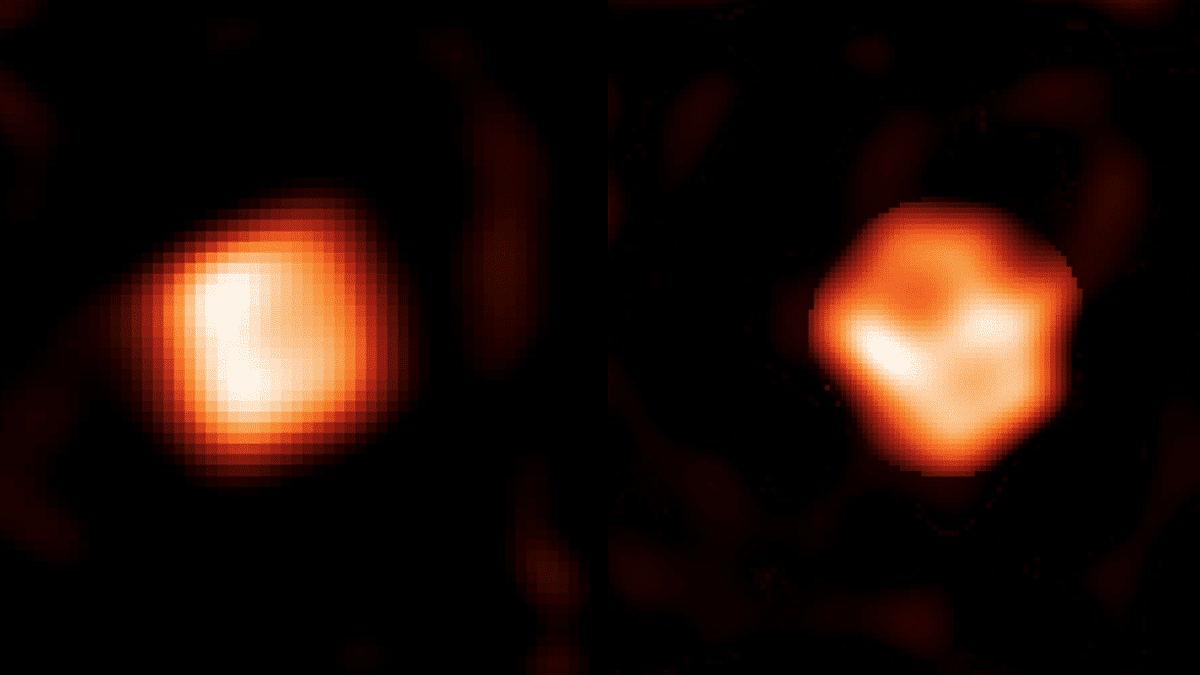One of the largest and brightest stars in the Milky Way Galaxy experienced a massive eruption similar to the red giant star Betelgeuse a year ago. A research team has now identified this, and thus found the reason for the significant drop in brightness, as the star called RW Cephei becomes a third fainter. They took the first “close-up” images of the so-called supergiant using the CHARA Array's interconnected reflector telescopes at Mount Wilson Observatory in California. It shows a celestial body with clear spots on its edge, which are the result of giant gas clouds that are frequently emitted.
advertisement
Star is literally stressed out
RW Cephei is one of the largest stars in the Milky Way, but because it is about 14,000 light-years away, even the most powerful conventional telescopes only resolve it as a point of light, Georgia State University wrote. This includes the CHARA optical interferometer, which has now succeeded in taking 2D images of the star for the first time. But “intelligent algorithms” also had to be used, as astronomer Fabien Baron explains. The result is images of a star “vibrated by movements in its outer layers.” Meanwhile, the star's appearance completely changed during the ten-month observation period.
These images and special measurements of RW Cephei's light in the visible and infrared spectrum confirmed that the star was partially obscured by microscopic dust clouds, the research team wrote. It is believed that this is just one of many explosions that have rocked the giant star in the past century. What happened in 2022 is special because it happened in our right direction, so we can see its consequences. The group says such outbreaks will continue to play a role. But we are likely to notice much less than most of them.
now The processes are described in the specialist journal The Astronomical Journal It reminds us of the events of the giant star Betelgeuse. It has reached the end of its life, but the last supernova is not expected for another 10,000 to 100,000 years. However, the unusually strong darkening of the star, known for its brightness fluctuations, at the beginning of 2019/20, was partly interpreted as an announcement of this eventual explosion. Perhaps it was a mistake, and instead it “exploded” so to speak, and did not recover from the huge explosion even years later. Once again, RW Cephei is much larger than Betelgeuse. If it were at the center of our solar system, it would extend to the orbit of Jupiter.
(meh)

“Total coffee aficionado. Travel buff. Music ninja. Bacon nerd. Beeraholic.”







More Stories
Researchers detect extremely high-energy gamma rays
Anxiety disorders in old age increase the risk of dementia
Researchers are particularly fascinated by these exoplanets.